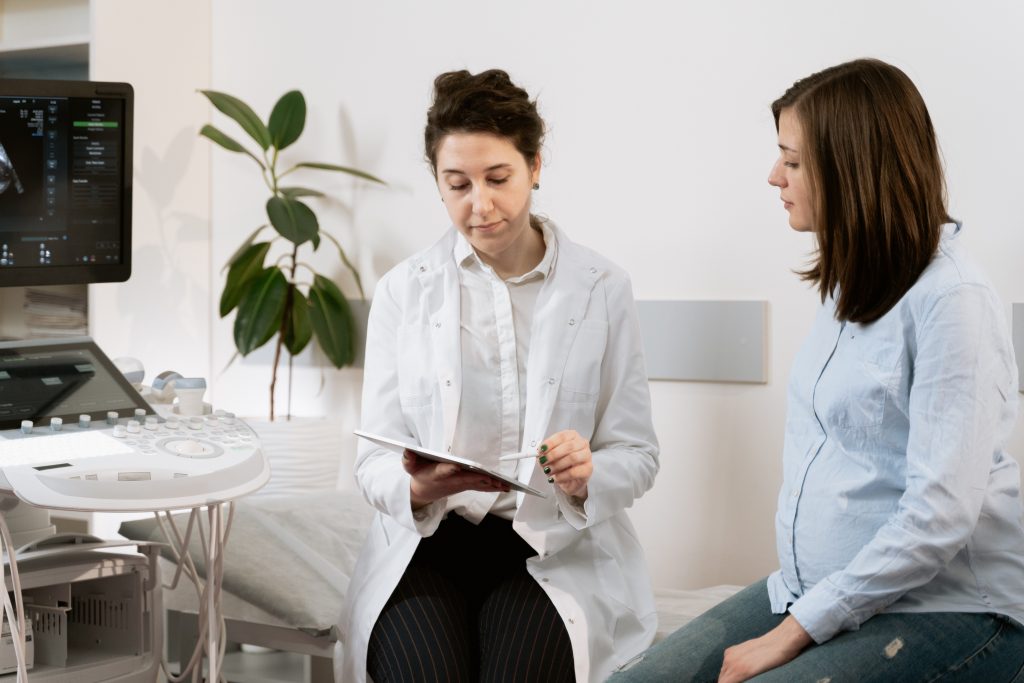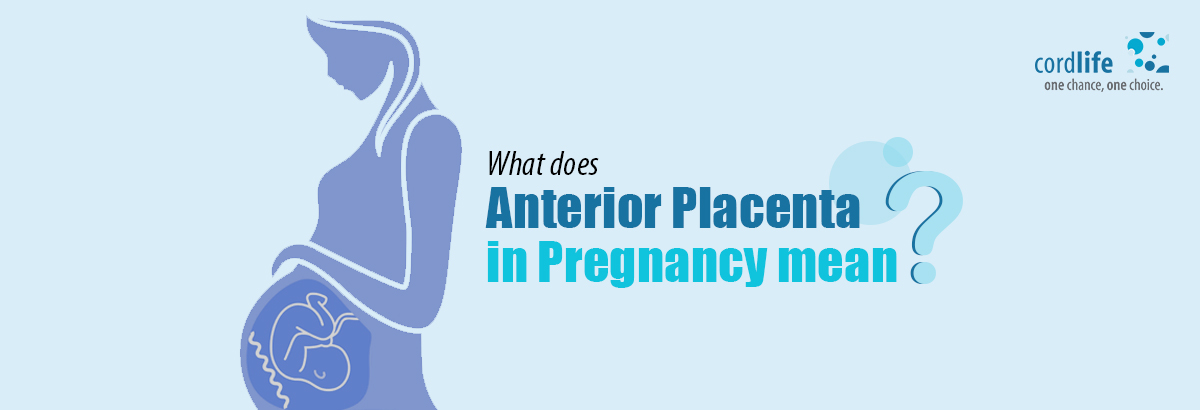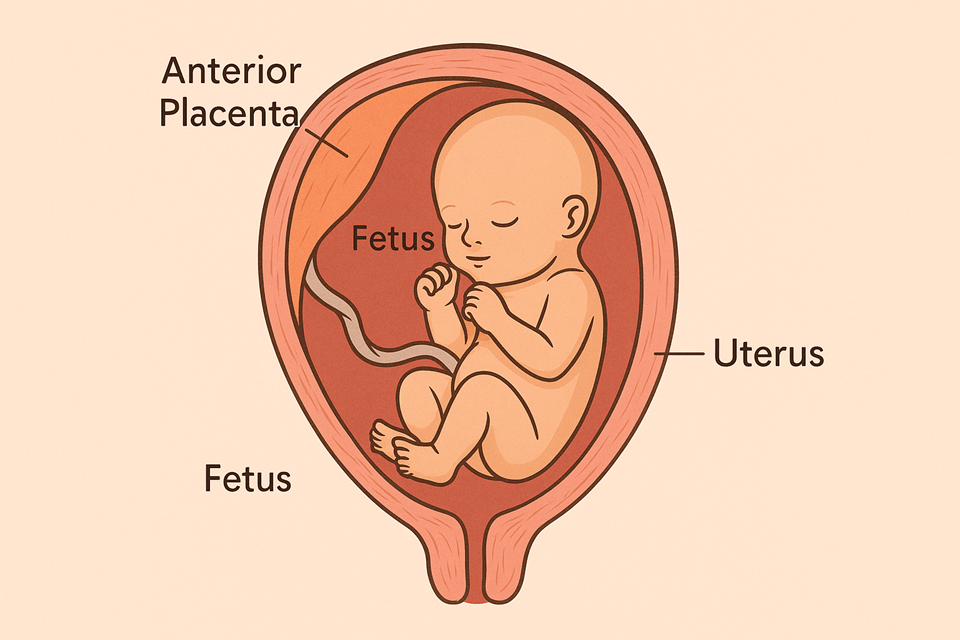Table of Contents
- What Does Anterior Placenta Mean?
- Anterior Placenta Symptoms: What Might You Notice?
- Is Anterior Placenta Risky?
- Anterior Placenta vs Posterior: What is the Difference?
- Let’s Understand the Role Of The Placenta
- How Does Anterior Placenta Affect Pregnancy?
- Will an Anterior Placenta Affect My Baby’s Movement?
- Anterior Placenta and Ultrasound
- Will I Need a C-Section?
- When Should You See A Doctor?
- Wrapping Up
Have you been diagnosed with anterior placenta? There’s no reason to lose your sleep over it. By anterior placenta, your doctor is referring to the position where your placenta has attached itself. When the placenta attaches itself to the front of your stomach, it is known as an anterior placenta, and when it attaches to the back wall near the spine, it is known as a posterior placenta. However, an anterior placenta doesn’t mean placenta previa or a low-lying placenta. Also, it doesn’t raise any risks during pregnancy.
What Does Anterior Placenta Mean?
The placenta plays a vital role during pregnancy by nourishing your baby with oxygen and nutrients while filtering out waste. When doctors refer to an anterior placenta, they will be describing the position of your placenta.
In this case, the placenta attaches to the front wall of your uterus, between your belly and the baby. This contrasts with a posterior placenta, which forms at the back wall near your spine.
How Common Is It?
An anterior placenta in pregnancy is very common, occurring in around 30-50% of pregnancies. It is just one of several normal placental positions and usually is not a cause for concern. However, its location can influence certain pregnancy experiences.
Anterior Placenta Symptoms: What Might You Notice?
In most cases women with an anterior placenta do not experience obvious symptoms. However, there are subtle differences, especially in how you perceive your baby’s movements.
Here are a few common anterior placenta symptoms:
- Delayed featal movement: You might not feel those little flutters until after 20 weeks.
- Muffled kicks: Movements can feel gentler or less pronounced, especially early on.
- Difficulty during Doppler scans: It may take a bit longer to detect your baby’s heartbeat with handheld devices for your doctors.
Rest assured, this is completely normal and just means the placenta is acting as a cushion between you and your baby.
Is Anterior Placenta Risky?
In general, having an anterior placenta does not put your baby at risk. However, there are some anterior placenta complications that your doctor will watch for, especially if the placenta starts to move downward toward your cervix.
Potential anterior placenta risks include:
- Low-lying placenta: This can develop into placenta previa, which may block the cervix.
- Increased risk of back labour: Some women experience more back pain during delivery.
- Placental abruption (rare): Premature separation of the placenta from the uterus.
Fortunately, these complications are uncommon and are often monitored through routine ultrasound.
Anterior Placenta vs Posterior: What is the Difference?
As mentioned earlier, the posterior placenta forms at the back of the uterus, which tends to make baby kicks more noticeable earlier in pregnancy.
Here is a quick comparison:
| Feature | Anterior Placenta | Posterior Placenta |
| Position | Back wall of the uterus | A clearer view of the baby |
| Kicks | Felt later, more muffled | Felt earlier and more pronounced |
| Ultrasound | It may take more effort to view the baby | Clearer view of the baby |
| Risk | Typically low | Also low |
The key thing to remember is that neither position is better or worse — they are just different.
Let’s Understand the Role Of The Placenta
The placenta is a disc-like organ formed during the third week of pregnancy from the cells of the embryo. Your baby is connected to the placenta with the help of the umbilical cord. This organ’s main function is to carry essential nutrients like proteins, calcium, etc. and oxygen from your body to that of the baby. It also transports back the waste from your baby’s blood. The placenta is delivered right after your baby is born, and sometimes even collected for stem cell banking. Just like the umbilical cord, the placenta is a potent source for stem cells as it has been carrying nutrients throughout the pregnancy.
How Does Anterior Placenta Affect Pregnancy?
The placenta can attach itself to any part of the uterus wall, the most common of them being the top or side of the wall. However, in some pregnancies, the placenta attaches itself to the front of the stomach, and this position is called an anterior pregnancy.
Although this position doesn’t drastically affect or alter your pregnancy, there are some differences that you may experience. Since the placenta acts like a barrier or a cushion between the baby and your stomach, you’ll have difficulty feeling their kicks or movements easily. Also, it can be harder to hear your baby’s heartbeat during sonography as the s/he is further away from your stomach.
While most of the situations mentioned above are not a cause of concern, there is one particular situation where an anterior placenta can be problematic. This can arise if the placenta starts growing downwards and, leads to placenta previa. As pregnancy progresses and your baby grows, the uterus stretches, and the placenta moves towards the top of the womb. In some pregnancies, the placenta moves towards the bottom of the uterus and ends up partially or completely blocking the cervix. This would require the baby to be delivered via a C-section and also increase the risk of other complications like excessive bleeding. However, this is not true for all pregnancies with an anterior placenta. Even if you had this condition during your previous pregnancy, that doesn’t mean it will be that way this time around.
Will an Anterior Placenta Affect My Baby’s Movement?
Yes — but only slightly. Many women report that with an anterior placenta, featal kicks and rolls are harder to detect in the second trimester. You might feel them later than expected (after 20–24 weeks), and they may be softer or feel more internal.
If you’re unsure whether you’re feeling movement or not, lie down on your left side in a quiet space, drink some cold water, and gently press your hands on your belly. If you’re still worried, consult your doctor.
Anterior Placenta and Ultrasound
During routine ultrasound scans, your doctor will check the location of the placenta. An anterior placenta ultrasound may require a bit more effort to visualise certain parts of the baby due to the placenta’s position, but with modern technology, it usually isn’t a problem.
In later scans, the doctor will ensure that the placenta hasn’t become low-lying or previa.
Will I Need a C-Section?
An anterior placenta by itself does not require a C-section. Many women with this placental position go on to have smooth, vaginal deliveries. However, if your placenta is low-lying or previa, or if you have other medical concerns, your provider might recommend a cesarean birth.
Placental location is just one piece of your overall pregnancy health — it doesn’t determine the delivery method alone.
When Should You See A Doctor?

Most women with an anterior placenta go on to have an uneventful delivery. Still, it is recommended that you go for regular check-ups. If you experience any of the following, then you must rush to the hospital immediately:
- Severe abdominal pain and prolonged discomfort
- Faster uterine contractions
- Vaginal bleeding
- Severe backache
- Trauma or injury to the stomach region
Wrapping Up
An anterior placenta pregnancy is completely normal and, in most cases, does not complicate your experience. Yes, it might change when you feel those first magical kicks or how your ultrasound looks, but it won’t change the love and bond you’re building with your baby.
Understanding terms like the anterior placenta, meaning, symptoms, position, and possible risks gives you the power to approach your pregnancy confidently. Trust your body, follow up with your doctor regularly, and enjoy every moment of this incredible journey.

